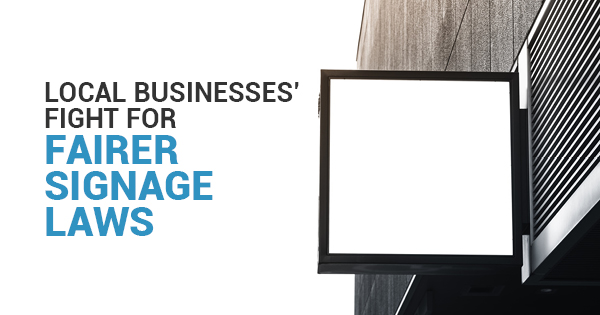
When it comes to brick and mortar business bringing in foot traffic, visuals are key. Recent studies have found that half of all customers who enter a business did so because of signs posted around their storefront, yet storefront signage is often partially dictated by town and city bylaws. Businesses in Framingham, Massachusetts are fighting town laws about signage that they feel are too restrictive. Some of the proposed changes include:
- Increasing window space allowed for signage to from 10% to 50%.
- Allowing portable signage for short amounts of time.
- Signs can include larger business logos.
- Make receiving sign variances from the Zoning Board slightly easier.
Some residents simply want some bylaws to be re-written for clarity. For example, local businesses have avoided common signage options such as poster printing or putting up local fliers or posters because of the reportedly hazy bylaw language. Full color printing seems to be allowed, but some store owners have had to question whether certain styles or colors are banned.
Despite popular opinion of this e-commerce age, the printing industry is alive and well, and especially necessary when it comes to printing for marketing material. Business cards and full color printing have a huge visual draw for potential customers. The majority of people are actually more engaged with print materials than digital materials, and tend to read print material rather than skim it.
Local businesses in Northport, NY are entering a similar battle to the local businesses of Framingham. Currently in Northport, signage laws state that exterior business signs can only include the name and basic function of the business, but many locals want to change this to allow hours of operation, phone numbers, and websites as well.
Supporters of the current bylaws claim that they are in place both for esthetic reasons and safety reasons. Esthetically, having minimal text on a sign may be more visually pleasing to some folks in a small town. Safety-wise, chairman Gary Blake of Northport’s Architectural and Historic Review Board claims that “stopping to write down a number is a hazard,” and that the town should not set a precedent of approving potentially dangerous proposals.
Whether or not the signage laws change for these small businesses, their print materials will continue to bolster their efforts in bringing local commerce to their communities. Support local signage, support local commerce.
